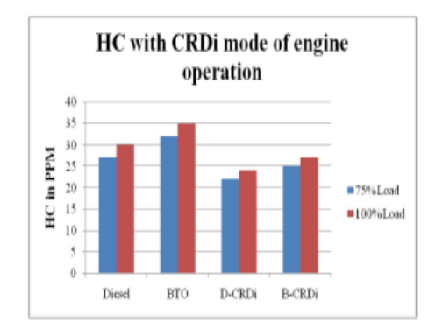


Indian Journal of Science and Technology
DOI: 10.17485/IJST/v17i10.3194
Year: 2024, Volume: 17, Issue: 10, Pages: 917-923
Original Article
Sardar M Shaikh1*, S V Khandal2
1Ph.D Scholar, Department of Mechanical Engineering, Sanjay Ghodawat University, Atigre, Kolhapur, 416118, Maharashtra, India
2Head & Associate Professor, Department of Mechanical Engineering, Sanjay Ghodawat University, Atigre, Kolhapur, 416118, Maharashtra, India
*Corresponding Author
Email: [email protected]
Received Date:20 December 2023, Accepted Date:06 February 2024, Published Date:27 February 2024
Objectives: To evaluate the effect of hydrogen and used temple oil biodiesel (BTO) combination on the performance of Common Rail Direct Injection (CRDi) engine. To report the maximum possible flow rate (HFR) for knock free operation of the engine at a speed of 1500 RPM. Methods: Transesterification process was used to get BTO. was inducted through intake manifold. BTO was injected into engine cylinder using electronically controlled technique. Findings: The study revealed that the peak HFR was for BTO and 0.24 for diesel at an Injection Pressure (IP) of 800 bar and Injection Timing (IT) of before top dead center (bTDC). The Dual Fuel (DF) CRDi engine with Toriodal Reentrant Combustion Chamber (TRCC) shape yielded 6% to lower Brake Thermal Efficiency (BTE) with reduced exhaust gas emissions except 19 to higher oxides of nitrogen (NOx) at and 100% loads. Both Peak Combustion Pressure (PP) and Heat Release Rate (HRR) were 5 to 9% higher than BTO run diesel engine operation. Combustion Duration (CD) and Ignition Delay (ID) were 6 to 15% lower in DF CRDi operation with . Novelty: Diesel engine comes with hemispherical combustion chamber (HCC). Toriodal Reentrant Shaped Combustion Chamber (TRCC) was adopted in place of HCC which results better mixing of air and fuel. and BTO combination was used to power CRDi engine. Electronically controlled fuel injection system developed and fitted to conventional diesel engine.
Keywords: Used temple oil biodiesel (BTO); Common rail direct injection (CRDi) engine; Toriodal reentrant combustion chamber (TRCC); Hydrogen flow rate (HFR); Hydrogen-biodiesel energy ratio (H2BER)
© 2024 Shaikh & Khandal. This is an open-access article distributed under the terms of the Creative Commons Attribution License, which permits unrestricted use, distribution, and reproduction in any medium, provided the original author and source are credited. Published By Indian Society for Education and Environment (iSee)
Subscribe now for latest articles and news.